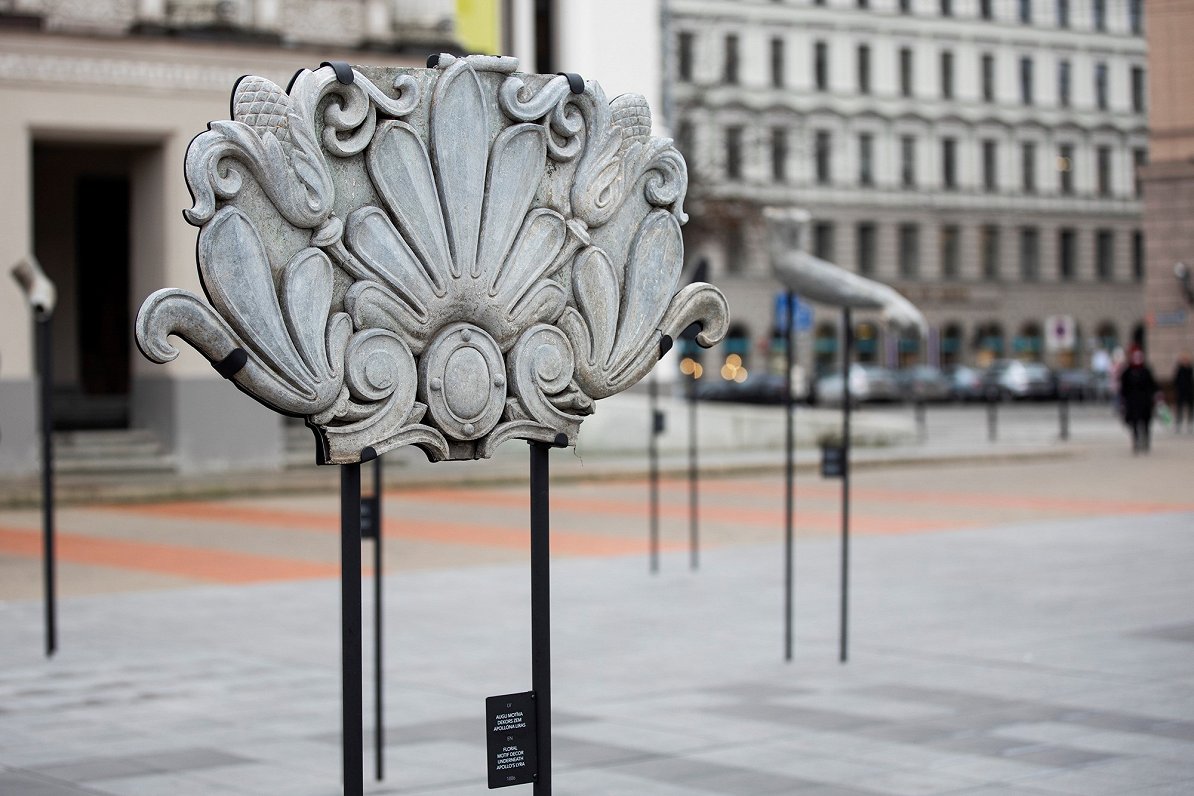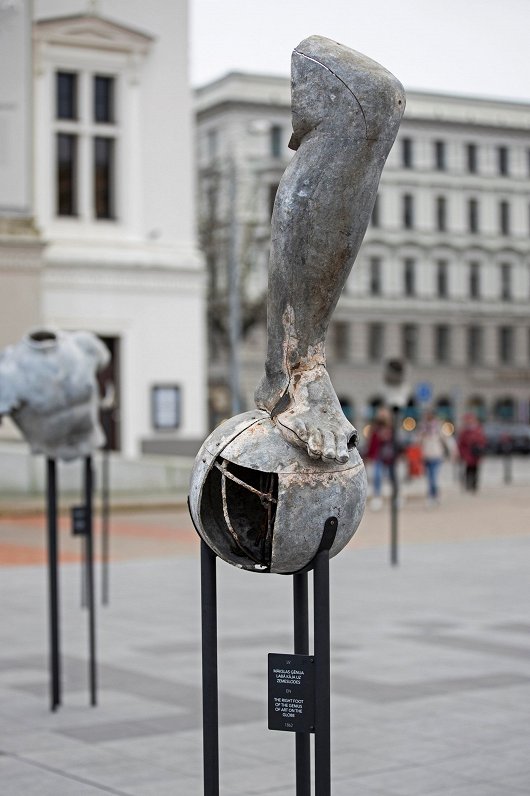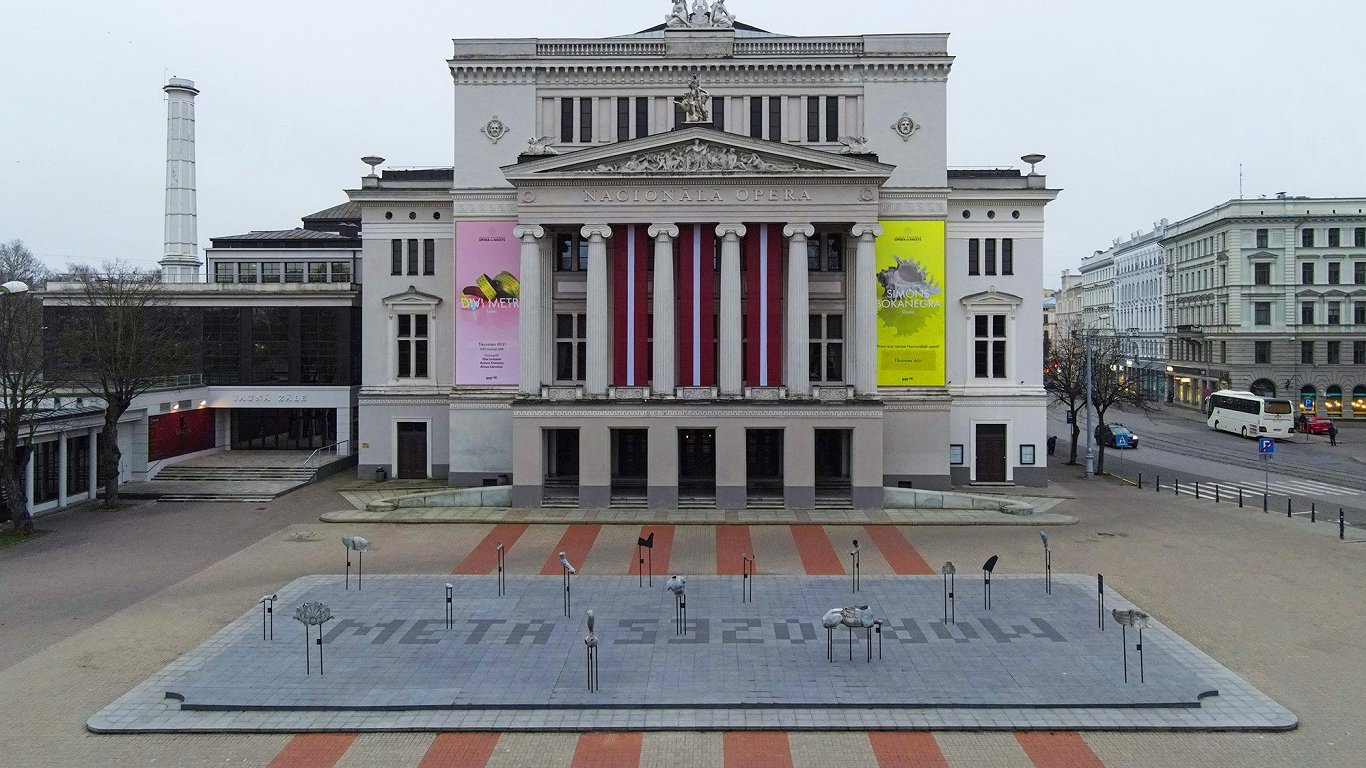An installation of sculptural objects “Metamorphoses” created by artists Krista and Reinis Dzudzilo has been unveiled at the Latvian National Opera and Ballet Building, inviting viewers to experience how the past and the future meet in the present.
In the Latvian Radio program “Kultūras Rondo”, the artists shared their story about how the idea for the installation came about. “Our path to these sculptures is unusual and amazing for us. More than a year and a half ago, we came across such unidentified, beautiful sculptures, fragments of them, the origin of which we did not know, ”said Krista Dzudzilo. “
Reinis Dzudzilo explained that the artists have encountered fragments of the sculptures thanks to the sculptor Oleg Skarain and his wife Irena Skaraine. “They were the people who took on the mission to preserve such things,” said Reinis Dzudzilo.
Krista Dzudzilo, Reinis Dzudzilo
Photo: Monta Tiger
–
–
“It has a lot to do with their own personal love for history, for the beautiful things they find valuable, and for art,” added Krista Dzudzilo. “It is clear that these sculptures are extremely beautiful, masterful and visually poetic.” She said that seeing the fragments of the sculptures in the garden of the Skaraiņi couple, the artists had the idea that they should be made available to a larger number of people. And so, by creating both a poetic and historical view of these finds and placing fragments of the sculptures close to their original location, the idea has been realized.

Installation “Metamorphoses”
Photo: Jānis Ķeris
–
–
Speaking about the theme of the installation, Reinis Dzudzilo emphasized the importance of time in “Metamorphoses”:
“It is, in the most direct sense, a fusion of time into one whole, where these three concepts – present, past and future – no matter in what order we call them, are at the same time.”
Krista Dzudzilo, on the other hand, spoke about the dialogue that, thanks to the installation, is formed between the past and the present: “Visually, it is like a garden of metal sculptures, where these individual details of fragments seem to levitate in the air. They are directly opposite the facade of the opera, so when a person passes by or looks at a building, he can see the original 157-year-old torso of genius and, looking up at the opera, he can see the same genius at the top of the pediment where the sculpture is. the original was located. For ourselves, it is a mystical experience with the fact that it is really interesting to think that these sculptures have seen Riga quite differently than it is now, and have experienced both wars and seen how Riga is changing, and we now have the opportunity to do so. look at the height of our own eyes and bodies. ”

Installation “Metamorphoses”
Photo: Jānis Ķeris
–
–
CONTEXT:
In 1860, the architect Ludvigs Bonštets created a project for the Riga City Theater building, which has housed the Latvian National Opera and Ballet Troupe since 1919. The original sculptures on the facade of the opera were cast in zinc in 1863 and 1886. They decorated the facade of the building until 1996 – due to the wear and tear of the material, all the free-standing figures in the reconstruction period of the Latvian National Opera building from 1991 to 1995 were replaced with concrete molded copies. The details of the original sculptures were kept by Olegs and Irēna Skaraiņi, but the artists Reinis and Krista Dzudzilo give new life to them in the object “Metamorphoses”. In cooperation with the Latvian National Opera and Ballet, the general Latvian public has the opportunity to look at its history, as well as the opera house from a close, personal point of view.
The object has been created in the public art program “Together”. The program is funded by the Ministry of Culture of the Republic of Latvia and is designed as a support mechanism for visual arts representatives to overcome the crisis caused by Covid-19, in addition to qualitatively improving the urban environment. The program “Together” is implemented by the Latvian Center for Contemporary Art.
–
Highlight text and press Ctrl+Enterto send the text to be edited!
Highlight text and press Report a bug buttons to send the text to be edited!
–
–


